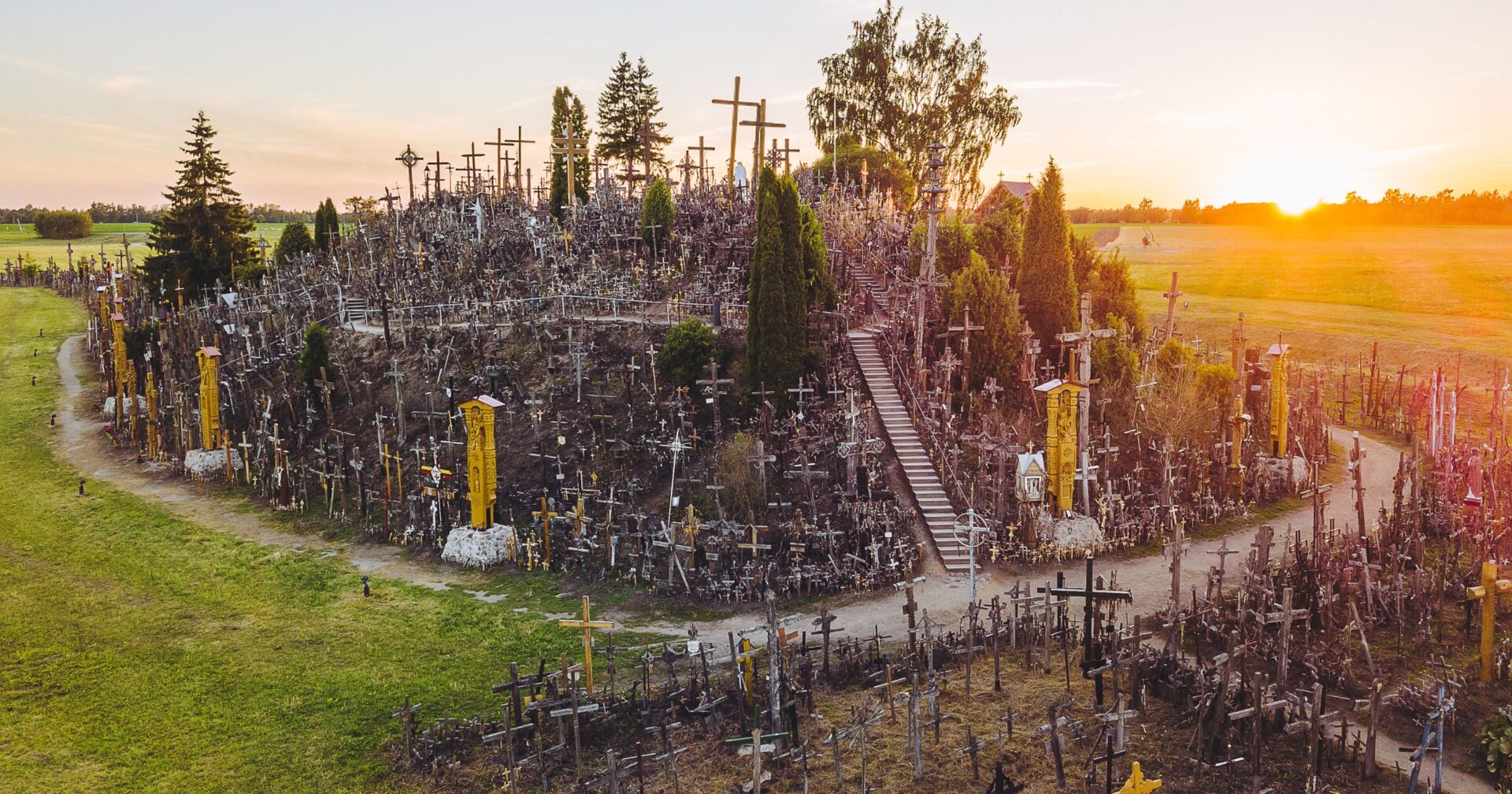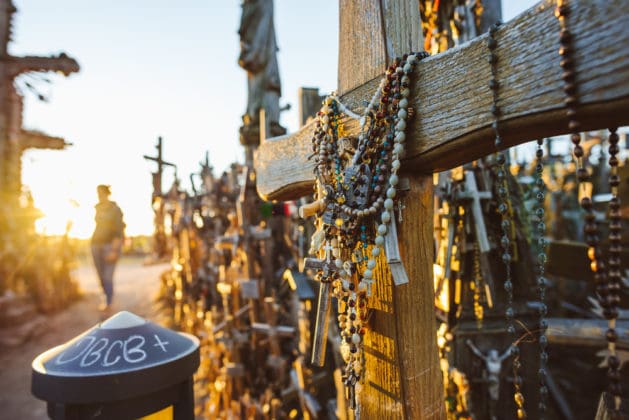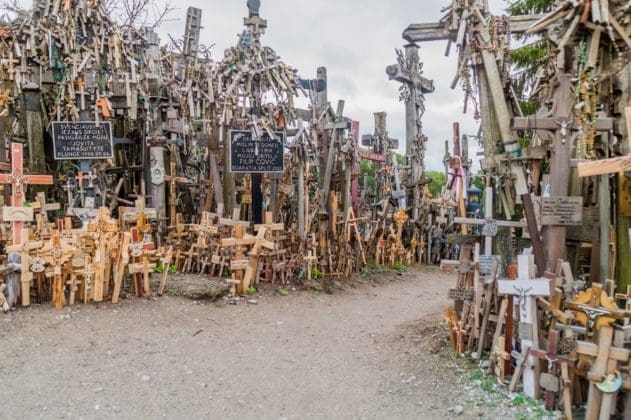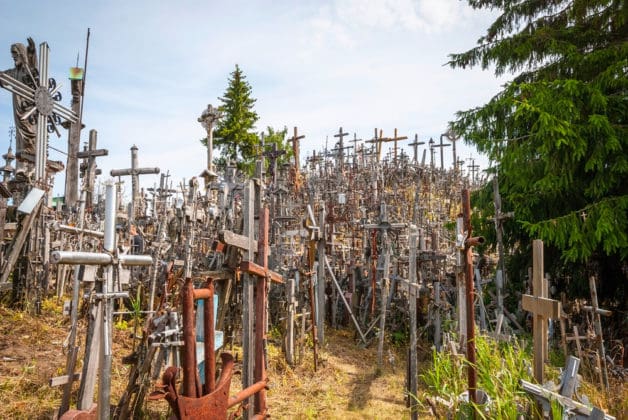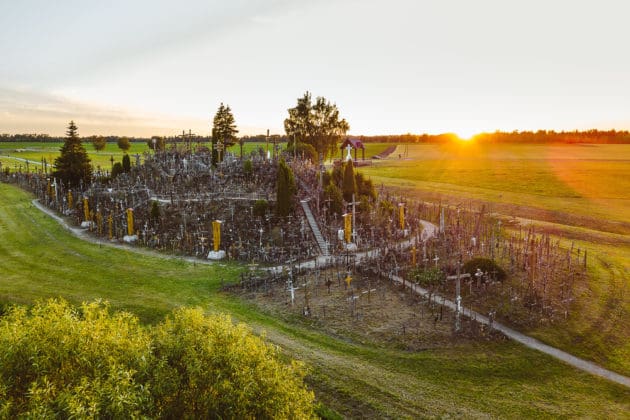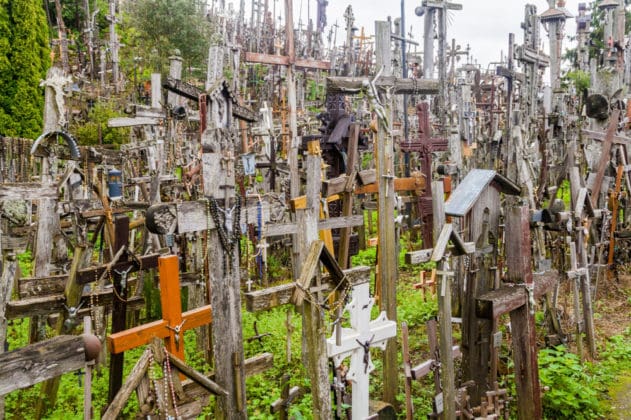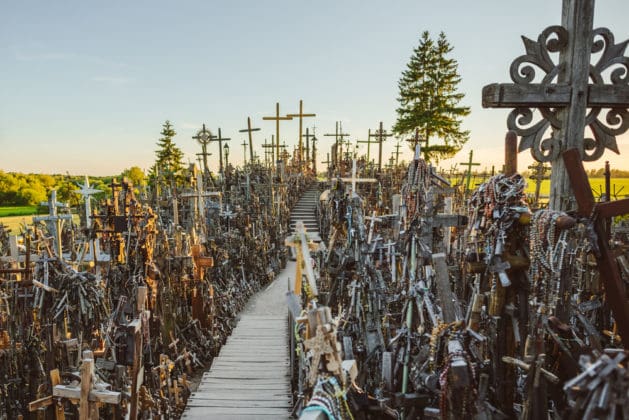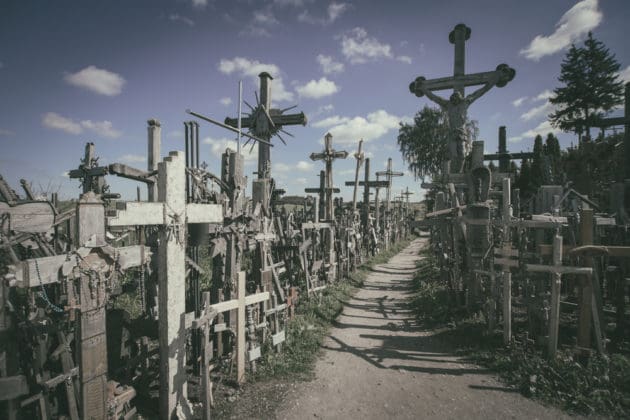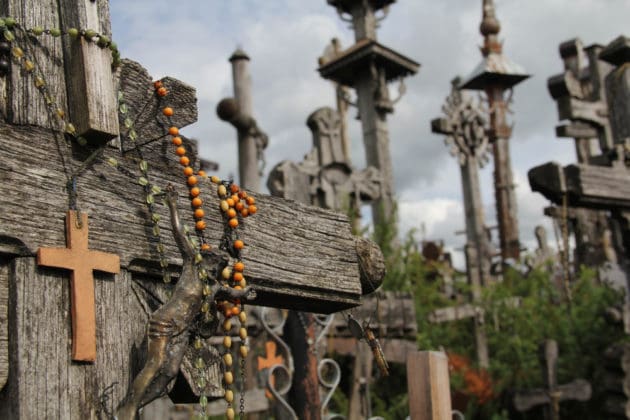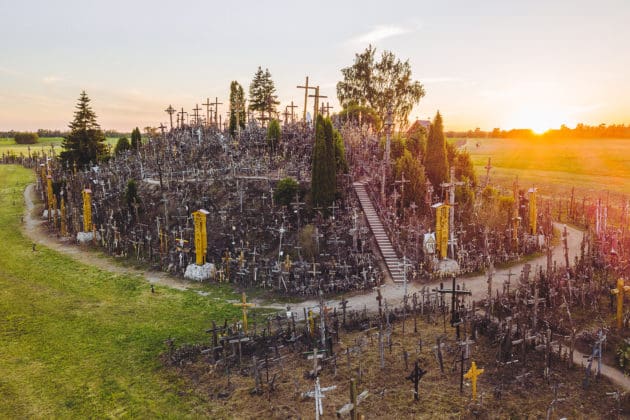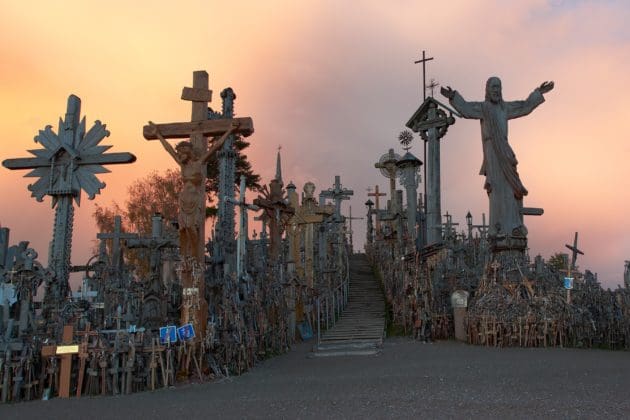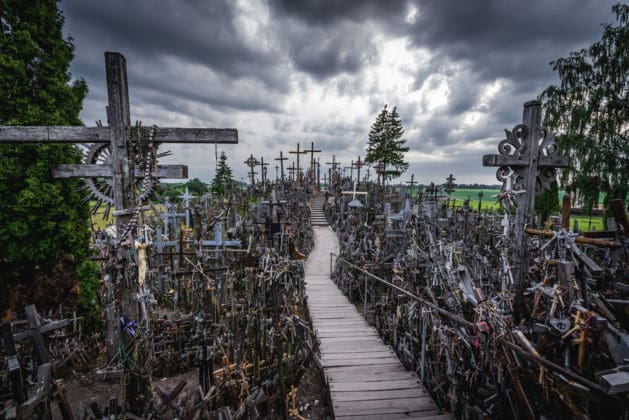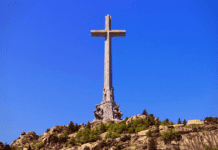If you travel around seven and a half miles north of the city of Šiauliai in northern Lithuania, you will come upon a rather peculiar hill – one adorned in over 200,000 crosses and crucifixes.
The decorated mound is known as the Hill of Crosses and has been a site of pilgrimage for Lithuanian Catholics for almost two hundred years. Following the Uprising of 1831, when families could not locate the bodies of perished rebels, they would place a cross on the former Jurgaičiai hill fort. Over the generations, the practice continued and would come to include statues of the Virgin Mary, tiny effigies, and rosaries.
Following the fall of the political structure of Eastern Europe during World War I, Lithuania again declared its independence. During the Lithuanian Wars of Independence, also known as the Freedom Struggles, the Hill of Crosses was used as a place of pilgrimage for Lithuanians to pray for peace, their country, and for loved ones lost during the wars.
During Soviet Occupation of Lithuania from 1944 to 1990, the site took on an even more special significance. People flocked to the hill to continue to leave their tributes, demonstrating allegiance to their national identity, religion, culture, and heritage. The Soviet Union thrice attempted to thwart the peaceful resistance, bulldozing the hill over. Despite Soviet attempts, each time the Hill of Crosses was replenished by faithful Lithuanians.
Ancient legends and mysterious folktales abound the Hill of Crosses, says one local:
“The hill has many secrets. According to folklore, there was once a church where the hill now stands. During a terrible storm, lightning struck the church and the tempest buried it under sand and rock with everyone still inside. Locals say that you can glimpse a ghost procession of monks at the foot of the hill at sunrise. Throughout the ages, magical appearances, visions of saints and sightings of ghosts have been a part of the hill’s history.”
One renowned story of the hill’s creation is the tale of a desperate father whose daughter had suddenly fallen ill. As the girl lay on her deathbed, the father had a vision of a woman who told him his daughter would recover only if he were to make a wooden cross and place it on a nearby hill. In the morning, he carved a wooden cross and rushed to the hill. Upon his return home, his daughter greeted him perfectly well again at the doorway. Since then, people have left their own crosses in hopes their prayers would be answered.
On September 7, 1993, Pope Saint John Paul II visited the Hill of Crosses and declared it a place for hope, peace, love, and sacrifice. Today the hill remains under nobody’s jurisdiction and people are free to build crosses as they see fit.
Photo credit: A. Aleksandravicius / Ana Flasker / Matyas Rehak / Skreidzeleu / Andrius Maciunas / Fotokon | Editorial credit: A. Aleksandravicius / Matyas Rehak / Shutterstock.com


